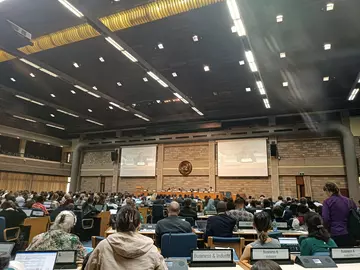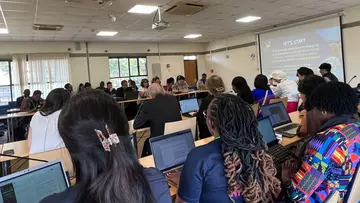
Nelly Musyoka
Community Liaison Officer
Representatives from 136 national governments convened in Nairobi, Kenya from the15th to 19th October 2023 for SBSTTA25 (the twenty-fifth meeting of the Subsidiary Body on Scientific, Technical and Technological Advice).
10 months after the historic adoption of the Kunming – Montreal Global Biodiversity Framework (KM-GBF), this meeting aimed to scientifically review the implementation of the KM-GBF framework, monitor its progress and prepare for the next meeting of the Conference of Parties.
Why is SBSTTA Important?
It’s only six years until the deadline for the 30by30 global biodiversity targets, which means that time is of the utmost essence. SBSTTA plays a critical role in ensuring that policies are informed by the best available science, and this is vital as effective and practical policies must be guided by the recognition of the direct and indirect drivers of biodiversity loss.
Throughout the scheduled timeframe of the meeting, Parties had in-depth discussions and negotiations around the agenda items, and this culminated in the development of recommendation that would help parties move from agreement to action.
Though the main agenda of the meeting was to develop a monitoring mechanism for progress of the biodiversity framework, the focus quickly turned to a constructive, but much-needed, debate on the assessment of the intergovernmental science-policy platform on Biodiversity and Ecosystem Services (IPBES), the sixth assessment report of the Intergovernmental Panel on Climate Change (IPCC) and global analysis of information in NBSAPs.
Developing African countries made clear the need for significant financial support, as well as scientific and technical capacity building in data collection and analysis, as this will translate to coherence between monitoring and reporting.
In some instances, the negotiations where lengthy and a lack of consensus called for the development of contact groups especially among others items 3, and 6 in the proposed agenda. Some of the contact groups worked through mid-nights to eventually come up with recommendations for adoption.

The need of Synergy remained high in all negotiations with parties agreeing on the need of consideration of work from other assessment reports e.g., IPBES, IPCC, FAO among others. In addition, several parties highlighted the need of soliciting inputs and views form IPLCS, women and youths when doing further analysis.
What stood out for me was the fact that the major groups e.g., NGOs, Women, Youth, and Indigenous People, all made statements for almost all the agenda items. Excitingly, most of the submissions got support from parties and found their way into the text recommendations. On behalf of ZSL and Wildlife Conservation Society and Bird-Life International a statement was made on the need to have a species program of work.

Side events are common in UN Conventions. They bring forth an avenue for major groups to relay dissatisfaction and point out gaps in the framework. At SBSTTA25 they facilitated constructive dialogues, networking with other stakeholders and parties. This catalyses de-siloed debates to accelerate the implementation of the framework. What stood out in most of the side events was the need to adopt the whole-of-society approach in the implementation of the GBF. To achieve that Women and Youths called for desegregation of data, the need of having gender responsive indicators and crafting of headline indicators for target 22 and 23 (calling AHTEG to act).
Finally, the end of SBSTTA25 and the closure mood kicked in with approval of the recommendations and adoption of the report. The moment was crowned by a standing ovation for the chair Hesiquio Benitez Diaz who had completed his five-year term.
